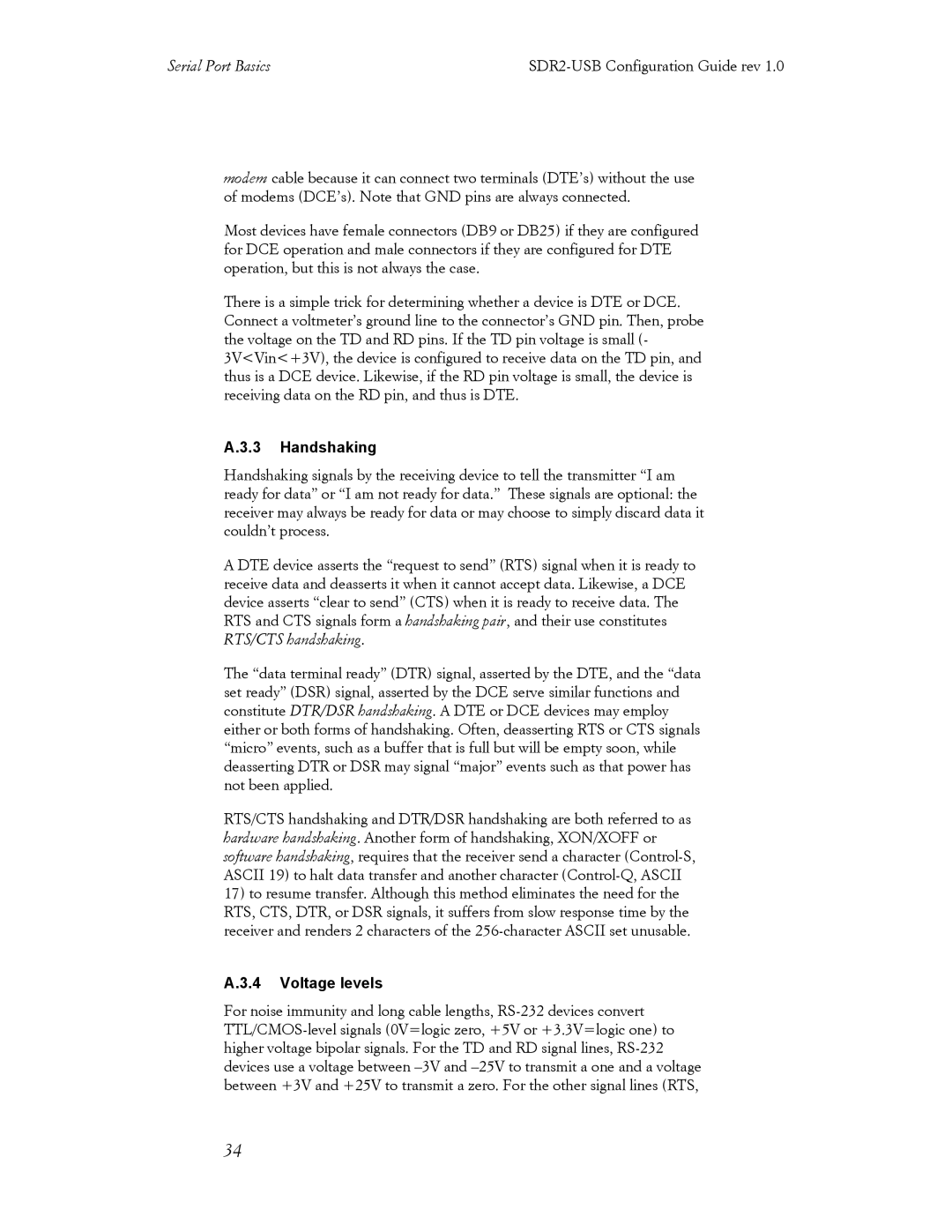Serial Port Basics |
modem cable because it can connect two terminals (DTE’s) without the use of modems (DCE’s). Note that GND pins are always connected.
Most devices have female connectors (DB9 or DB25) if they are configured for DCE operation and male connectors if they are configured for DTE operation, but this is not always the case.
There is a simple trick for determining whether a device is DTE or DCE. Connect a voltmeter’s ground line to the connector’s GND pin. Then, probe the voltage on the TD and RD pins. If the TD pin voltage is small (- 3V<Vin<+3V), the device is configured to receive data on the TD pin, and thus is a DCE device. Likewise, if the RD pin voltage is small, the device is receiving data on the RD pin, and thus is DTE.
A.3.3 Handshaking
Handshaking signals by the receiving device to tell the transmitter “I am ready for data” or “I am not ready for data.” These signals are optional: the receiver may always be ready for data or may choose to simply discard data it couldn’t process.
A DTE device asserts the “request to send” (RTS) signal when it is ready to receive data and deasserts it when it cannot accept data. Likewise, a DCE device asserts “clear to send” (CTS) when it is ready to receive data. The RTS and CTS signals form a handshaking pair, and their use constitutes RTS/CTS handshaking.
The “data terminal ready” (DTR) signal, asserted by the DTE, and the “data set ready” (DSR) signal, asserted by the DCE serve similar functions and constitute DTR/DSR handshaking. A DTE or DCE devices may employ either or both forms of handshaking. Often, deasserting RTS or CTS signals “micro” events, such as a buffer that is full but will be empty soon, while deasserting DTR or DSR may signal “major” events such as that power has not been applied.
RTS/CTS handshaking and DTR/DSR handshaking are both referred to as hardware handshaking. Another form of handshaking, XON/XOFF or software handshaking, requires that the receiver send a character
17)to resume transfer. Although this method eliminates the need for the RTS, CTS, DTR, or DSR signals, it suffers from slow response time by the receiver and renders 2 characters of the
A.3.4 Voltage levels
For noise immunity and long cable lengths,
34
